


























Spring 2024 Issue II 10 The Power Fantasy: A Look at Religion Through Media The Intriguing Intersection of Gaming and Piety EPORTER THE 14 The Art of Mentorship Hatters Extending a Helping Hand 24 Moving Up in The World: Accessibility and Elizabeth’s Elevator Stetson’s Efforts To A More Inclusive Future
With the last Reporter edition of the school year also comes touches of bittersweet renewal as we say goodbye to old leaders and welcome the new. As we bid adieu to this chapter, I’m thrilled to hand over the Reporter reins to Sara Ward, the new Executive Editor.
Alis Cadena, Executive Editor 2023-2024
Following our Renaissance theme, I’m excited to turn the page and open another chapter in The Reporter’s saga. For me, Renaissance represents combining the new and old to create something great. I’ve been at this whole journalism game for a long while now. It all started in middle school when I fell in love with telling people’s stories, and I haven’t stopped reporting since. I was on the yearbook staff for five years, where I took a plethora of photos, talked to all sorts of people and even fought a school board— twice. I look forward to tying this experience into the new adventures that await me at The Reporter.
I dedicate my first letter to the editor to Danielle Pomeranz for getting me to where I am now, Alis for setting me up for success, Reagan for being the best partner in crime and of course, to all of you for following me along on this new journey.
Sara Ward, Staff Writer

Carlye
,



In the spirit of Renaissance, with the old becoming new and all that, I’m so excited to hand this part of the Reporter tradition off to the new Managing Editor of the Reporter, Reagan Shivers.
 Mahler, Managing Editor 20232024
Mahler, Managing Editor 20232024












When Carlye asked me to brainstorm themes for this issue, I had so many ideas I wanted to express – new beginnings, a new season and the dreaded near event of watching my best friends and fellow Reporter editors walk the graduation stage – a mixed bag, I know. Renaissance has a personal meaning to me, but I hope it’s something that readers can find their own beginnings in. Within this issue, you will find ancient religions, cultures and buildings (shout out to Elizabeth Hall), but you’ll also find the beauty of using these elements to form a more insightful and accessible future.

So, I give a toast to personal growth, opportunity and the future successes of the Reporter and readers alike.
Reagan
Shivers, News Editor



2 the reporter
letters
Layout by Hayden Collins Graphics by Hayden Collins and Maria Latour


This is weirdly sad for me, if I’m being completely honest.










I am honored to have spent the last year as Hatter Network’s Editor-In-Chief, and I am thrilled to pass this title on to Ali Burgess for the 2024-2025 academic year. Thank you for taking the time to pick up this issue of The Reporter, for reading my last Letter From The Editor and for reading Ali’s first one.
Once a Hatter, Always a Hatter.
Cas Bradley, Editor-In-Chief 2023-2024


I feel like I was passed down this role and I had to make it my own, and the team was a huge part of what that meant for me. I’ve spent the last two years working on this magazine, this team’s sustainability, and establishing the Creative Branch as a valid and vital part of Hatter Network. This role deserved to be so much more than just me. It deserves to be different styles and perspectives converging to create a project that reflects Stetsons vibrant community of designers and digital artists. And I’m beyond happy with how far it’s come, and moreover, I’m beyond proud to be passing the baton to someone so talented and capable.

Michelle, take it awayc


Hayden Collins, Creative Director 20222024































Hello! My name is Michelle Marshall, and I am the incoming Creative Director of the Creative Team at Hatter Network!



















when I’m





My predecessor, Haydenchas carried the responsibility of establishing the Creative Branch of Hatter Network and giving it a voice of its own– t. This means I have some big shoes to fill! This role is an opportunity I am ecstatic to take on. Any designer will tell you the magic that happens when students who love art and design come together to add to something as pivotal as student media. This is the part of my job I am looking forward to the most! I’m excited to see the creative cogwheels spin as my peers and I define how we will channel our artistry, teamwork and talents to make the Creative Branch better everyday.








To write this now feels surreal and in the essence of growth and change for me. Seeing all of the work put into this issue and the Reporter this past year has truly felt like a renaissance in motion. To all the seniors who leave the Reporter with this final issue, I hope you are proud of all the permanent marks you have made– the beauty, the passion and the art on these pages. I know that this issue is not only a beginning for me, as rising Editor-in-Chief, but for so many other amazing individuals who will carry on the legacy of the Reporter. I know in these pages, you will find something that gives you a taste of your own personal renaissance.


Hats off my dear friends, this is just the beginning.

Ali





 Burgess Executive Editor of Touchstone
Burgess Executive Editor of Touchstone
, ,










As students, we are both the facilitators of conversation, as well as the topic!
Michelle Marshall, Creative Staff











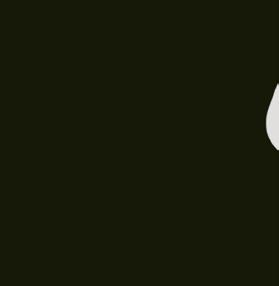







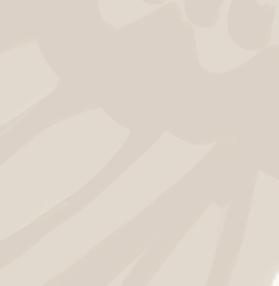






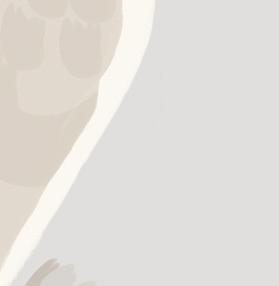






















the reporter
3















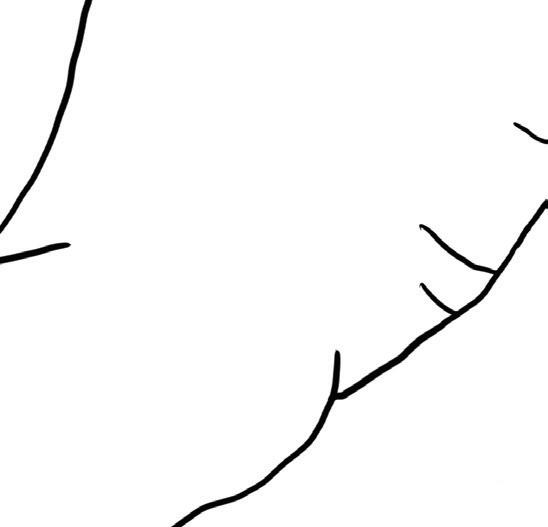














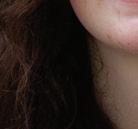































Editor-in-Chief
Executive Editor Carlye Mahler Managing Editor Hayle Morgan Fact Checker Hayden Collins Creative Director Sisi Small Webmaster
4 the reporter
Cas Bradley
Alis Cadena
EDITORS EDITORS EDITORS

REPORTER THE
What do you think deserves to have a ‘Renaissance’?

staff
Cas Bradley, Editor-in-Chief
Hayden Collins, Creative Director


Alis Cadena, Executive Editor of The Reporter


Crackle Nail Polish



Lengthy Theme Songs




Carlye



Carlye Mahler, Managing Editor of The Reporter


Reagan Shivers, News Editor of The Reporter

Wendy Williams




Ciara Kelley, Arts & Culture Editor



Kesha

Venus Turnbull, Creative Staff
Maria Latour, Creative Staff
Cristal Sherman, Creative Staff
Michelle Marshall, Creative Staff
Maria Latour, Creative Staff
Emy Acosta, Photo Editor
Indya Mckoy, Photographer
Brooke O’Brien, Social Media Director

Sisi Small, Webmaster
Brandy Bennet, Staff Writer
Carla Rosario, Staff Writer

Lili Sheridan, Staff Writer

Sara Ward, Staff Writer



Disco


Lanajae Gaffney, Staff Writer

Iris Hunt, Staff Writer















Alondra Y Rivas-Jimenez, Staff Writer



Pin-Up Curls

Abigail Denton, Staff Writer






De’Vanese John-Baptiste, Staff Writer


Emma Weiss, Staff Writer
Weiss,





Hayle Morgan, Copy Editor
ABOUT US

When it comes to joining Hatter Network, we are never not excited about someone wanting to join our ranks. If you want to write, The Reporter is the place. If you like to appreciate art, music and writing, Touchstone Literary Arts Journal is where it’s at. If you want to create your own podcast, or learn how to use the tech in our radio station, WHAT Radio is there. Hatter Network is an extacurricular media program run by students, for students, to provide them with the information we think they need to know, or an outlet for their creative endeavors. If you’re interesed in getting involved, please email our Editor-in-Chief, Cas Bradley, at cabradley@


















The Reporter, as part of Hatter Network, is the oldest collegiate magazine in the state of Florida. We publish four times per year, twice per semester. Florida Sun Printing prints 300 copies per issue on 8.5 x 11 inch, 80# Gloss Test, Most body text is set at 11 pound Adobe Garamond Pro or Times New Roman with 13 point leading set with a combination of regular, italic and bold. All pages are designed using Adobe Creative Suite Photoshop and Illustrator. For additional information please visit hatternetwork.com. Questions or concerns can be mailed to 421 N Woodland Blvd. Deland, FL 32723 or emailed to hatternetwork@gmail.com.
stetson.edu or apply on Engage.
EDITORS the reporter 5


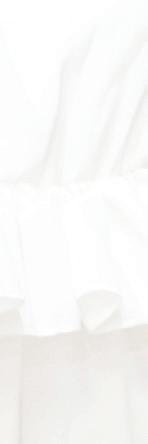








28 Photostory Gatsybing It Up In Elizabeth Hall 28 Contents 6 the reporter
Noureen Saaed ’24

The Fascinating Tale of Cultural Renewal Abroad Roots Renewed: Cultural Evolution Beyond Borders
The Power Fantasy: A Look at Religion Through Media
The Intriguing Intersection of Gaming and Piety
The Art of Mentorship Hatters Extending a Helping Hand
Dear Reader Words of Wisdom from Reporter Staff
Studio Ampersand Meet Jodi-Ann Taylor, a Renaissance Woman
Moving Up In The World: Accessibility and Elizabeth’s Elevator
Stetson’s Efforts To A More Inclusive Future
Photostory
Gatsybing It Up In Elizabeth Hall
Playlist
Rhythms of Rebirth
28 30
the reporter 7
08 10 14 18 21 24
Contents



The Fascinating Tale of Cultural Renewal Abroad Cultural Renewal Abroad

The word culture comes from the word cultura in Latin, which translates to cultivate. It is fitting, then, that culture today is all about cultivating the patterns, practices and beliefs that make us unique and differentiates one group of people from the other. Culture has multiple aspects, but some prominent examples our minds jump to are food, religion, arts and moral values.
Culture has a way of evolving and reinventing itself from generation to generation, especially now in this period of ever-increasing globalization. There are around 45 million foreign-born immigrants living in the US, which is roughly 13.6% of the entire population. When moving abroad, you can choose to maintain your culture, but you also have to adapt to a new environment, new social norms, arts and food. There are adaptations of traditional recipes for food allergies or personal preferences. Along with artistic currents focusing on cultural fusion, artists like Wangechi Mutu and Yayoi Kusa-

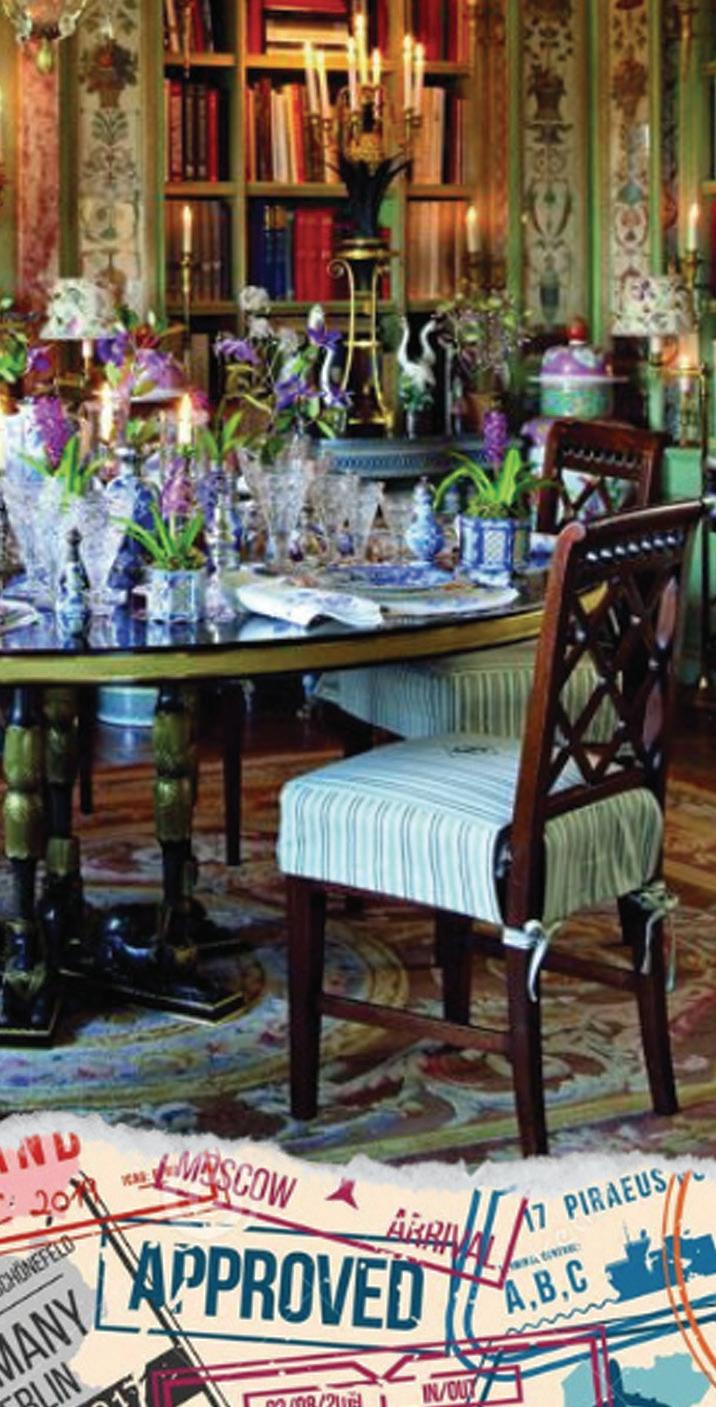
ma represent this cultural fusion in their paintings and sculptures they create.
When traveling around the world, though many immigrants bring a little piece of home, the sense of culture is something more intangible than food or art; it is also history and identity. Diana Quintero Kytlyar ’24 is a Venezuelan-Ukrainian student who moved to the US in March 2018 due to the political crisis in Venezuela. Quintero remembers having two big cultural shocks– the first one being the food and diet. “I was used to eating a full course meal for lunch, made with good quality produce in my country, but here you have to buy organic to avoid certain chemicals and make your own dishes. Plus, you don’t have a lot of time to eat much sometimes,” she explains. The other shock was “how people are less judgemental about what you wear.” Sheelaborates, “In my country people care a lot about brands and showing off. People have a need to look expensive.”


8 the reporter
Story by Carla Rosario
Layout by Hayden Collins
Graphics by Cristal Sherman
Quintero also shared about her experiences of giving up parts of her culture and how she had adapted. She explained that since developing a gluten allergy during her time in the US.
“I have had to find alternatives and learn how to make gluten free versions of my favorite things.”
She adds that she has started to make gluten free desserts from both cultures, too. “Just this weekend I made a Ukrainian cake called kyiv for my mom, and I made it gluten free.”
Chukwunonso “Nonso” Okeke ’25, an international student from Nigeria, moved to the US when starting school at Stetson in August 2021. Okeke describes his biggest cultural shocks also being related to food. He shares, “The food back home is very spicy, and we have a lot of variety.” Okeke talks about how he has had to adapt his way of cooking his traditional foods after moving as well. “Even the basic ingredients we use to make our food is not the same. For example, the tomato paste I used to make my rice is different than back home, so I have had to adjust,” he explained.
Okeke also explains that there are other cultural differences that he has faced, such as clothing differences, religious scenes and social aspects. “In Nigeria, we have different clothing depending on the occasion or the time of the day. The social scene is very different,” he continues, “I
feel like back home the scene revolves around having fun, but here it revolves a lot around alcohol, so I have gotten used to it.”
Another Venezuelan international student, Alejandro Salazar ’26, moved to Peru in 2017 and later on to Florida in 2022. Salazar has gone through the adaptation process twice in his life and has adapted aspects from both of his countries– experiencing shocks from both transitions. Salazar remembers when he moved to Peru, saying,“the people were
different, even if we speak the same language it was different. They were more religious-oriented, and they are very conservative. In the US, I found citizens of the world,” he goes on, “Here, you find different kinds of people with different beliefs and behavior.”
Salazar explains when he adapted to Peruvian culture as well. “I changed the way I speak a little bit so I could connect with the people. I learned to cook in Peru, and when I get to cook, I do more Peruvian stuff than Venezuelan,” he adds. When Salazar moved to the US, he had to adapt again, except to American culture, which he says is significantly different from Latin American
These traveling and moving experiences show us how not only the perception of the world changes but also how these students perceive themselves. The people you meet most likely won’t be all from the same area or the same background, and the mix of cultures as well as the learning curve it brings creates a new sort of culture. Stetson students have been reconnecting with their heritage, looking deeper into their roots and incorporating what they find into their own technological and social culture. They have been sharing it on social media and making cultural information available to anyone interested in connecting with their heritage.
The concept of culture is not foreign to anyone, but the meaning behind it is unique to every person and their beliefs. Moving abroad challenges these beliefs and ends up in cultural adaptations, but most importantly, a cultural renewal that will


the
9
reporter
The Power Fantasy: The Power Fantasy:
A Look at Religion Through Media
Whether through books, movies or video games, we find ourselves through characters and storylines. We learn ideas of good and evil from tales of heroes and villains and morals such as “slow and steady wins the race.” The impact of these values communicated through media is a small part of what Dr. William Chavez, an Assistant Professor in the Department of Religious Studies, hopes to cover in his upcoming JSEM, “Religion and Video Games” in Fall 2024. Chavez, a relatively new professor to Stetson, was excited to tackle the requirements of Stetson’s JSEM, a writing enhanced course for juniors meant to develop students’ sense of personal and social responsibility.
One of the areas that Stetson considers to fall under the umbrella of personal and social responsibility is “Ethical or Spiritual Inquiry.” Chavez hopes to use video games to expand students’ understanding of religious practices and their function. Although the two appear seemingly unrelated, the connection Chavez draws between the two became clear to me as I sat down with him for an in-depth interview on the inspiration and intention behind his upcoming JSEM.
Chavez has a broad view of religion that includes the study of mythology. To completely submerge oneself in this mindset, he requests that students suspend the idea of belief as a necessary precursor for practicing religion – a large ask for college juniors juggling other classes. Early in the interview, Chavez discloses that his introduction to the study of religion was his undergraduate senior honors thesis on Satan and exorcism. He recalls a moment when a young relative asked him about his studies. At this time, he knew she was reading the Goblet of Fire, which he knew featured Mad-Eye Moody, the dark wizard catcher. Chavez tells her that he studies the equivalent of Mad-Eye Moody in our world. He says, “They call themselves and they remove
“
demons from people. They also confront satanic worshippers, and who they think are things that go bump in the night. That’s who I studied.” He takes a moment to laugh before continuing to explain how his studies have morphed his understanding of what constitutes belief. In short, he feels that belief isn’t needed.
Chavez playfully challenges structure and established systems of thought. In his “History of Satan” course, for instance, Chavez explains that, “Even if the Devil and the Christian cosmos exist, our understanding of them is filtered through human ingenuity and human culture.” He questions not only the functionality of religion but takes a deeper look at how religion has socially impacted us in all of its forms. He says, “Disney and its early films are really fascinating. A lot of them are pulled from Brothers Grimm stories and European folklore. Princess dresses, medieval castle and cathedrals, none of those things are specific to American folklore and American culture. America has never had a kingship; The overwhelming culture is sort of airlifted out of European fantasy.”
EVEN IF THE DEVIL AND THE CHRISTIAN COSMOS EXIST, OUR UNDERSTANDING OF THEM IS FILTERED THROUGH HUMAN INGENUITY AND HUMAN CULTURE. ”
You may not believe in gods associated with these myths, but are these tales of princesses in Disney or Nintendo games teaching you something about a cultural religious practice? What, or whose, beliefs are you practicing? The answer may surprise you if you have the pleasure of hearing Chavez dissect the Harry Potter series, where he feels that Voldemort’s storyline reveals something about our modern understanding of benevolence and punishment.With this in mind, Chavez makes
10 the reporter
Fantasy: Fantasy:
Story by De’Vanese John-Baptiste
Layout by Hayden Collins
Photos by Reagan Shivers
a point that we may be subconsciously adjusting our ethics and beliefs in response to a larger and more rampant culture. More intriguing to Chavez is how those ethics and beliefs give gamers agency in how they experience the medium. Perhaps this is the opportunity to use video games to showcase how exercising agency in religion, either by choosing to abide by the predetermined “rules of the game” (what constitutes sin and what doesn’t) or forgo them, impacts individual religious experience.
For example, one game that Chavez finds intriguing when discussing agency in gaming is Friday the 13th: The Game. The objective of the game is for the camp counselors to survive the rampage of machete-wielding maniac Jason Voorhees. However, players will sometimes choose to ignore the rules of the game, and instead attack other counselors while Jason is on the loose. For example, taking a four-seater car and driving off in it alone–limiting other players’ odds at survival. Chavez reflects on these choices during gameplay saying, “They do it because they think it’s
funny, or they do it because it’s vindictive. Having that type of realm of possibilities is something I want to engage with students of, “How are they acting? And how are they treating others in online spaces?” These possibilities gamers find in front of them by stepping into the shoes of someone else is one of the central questions of the class.
Fictional characters can remind us we aren’t alone in our experiences, and allow us to experience personal situations from a different perspective.
During the interview, Chavez recognizes that gamers are

the reporter 11
more likely to play a game if they can experience it from a perspective of power. He argues that users are often attracted to video games because of the otherworldly capabilities they may come with. Chavez believes that there “is a power fantasy being exercised on what type of things can be done in games. That you can fly, that you’re really strong, that you can teleport, that you can do all of these moves and all these combos.” This sense of power can be relieving for the gamer as it allows them to reimagine frustrating scenarios with solutions or actions that can be cathartic. However, this same power has the potential for misuse.
If gamers decide to treat the digital space as a medium for their escapist fantasies, i.e. a way to “blow off steam,” it may impact the way they view their actions and the consequences of them. Chavez sets the foundation for discussing this by citing the “Benign Violation of comedy” theory from Peter Mcgraw and Caleb Warren, published in 2010. Chavez self-describes his understanding of the theory as such: “In the constructed simulated world of the joke, because it’s not real, maybe then you’re able to laugh at it. Because no one’s actually getting hurt, right? So even if it is a violation, even if the line has been crossed, it’s a benign one. It’s one that’s not actually substantiated or meant to have an impact.” In this simulated reality, their conversation may be limited to chat rooms or isolated voices from the heavens redirected through headsets. However, when the benign violation occurs, how separated are their simulated actions from
their real impact? Chavez poses this question by asking, “Does cyberbullying exist online? If you are a trolling cretin in cyberspace, does that actually make you a trolling cretin in real life?” One aspect of reality that he admits has permeated gameplay is gun worship, and its real-life implications have long since been debated.
Amused, after recalling the existence of Wii Motion guns, a 3D printed plastic pistol where the Wii game controller can be inserted. Chavez shares that he is, “Utterly fascinated that gun worship is to that extent. That’s the best place for it to show up as a benign violation. They’re shooting bad guys…with their fake guns. But they’re also going…
“
IN THE SIMULATEDCONSTRUCTED WORLD OF THE JOKE, BECAUSE ITS NOT REAL, MAYBE THEN YOURE ABLE TO LAUGH AT IT...”
to make their gun, their fictional virtual gun experience, as realistic as it can be...” Chavez does connect traditional ideas of masculinity to hero worship, gun wars and weapon worship in mythology. He asserts, “Greek mythology is overwhelmingly defined by quest and combat. [Winning combat or a quest is how] you demonstrate that someone is worthy of praise or that they have some sort of social currency of which to praise.” While all of these are ideas he hopes to dive into in his upcoming JSEM this fall, he does not want students to think that he is searching for just one answer.

One thing that becomes clear throughout talking with Chavez is that he does not consider himself to be an activist. He has a reflective moment asking out loud to himself, “Do I study something to change it?” He pauses momentarily before continuing on, “I’m personally on the side of things where I don’t. I don’t really want to be influencing something. And I don’t really want to study something in order for me to change it.” In fact, he teaches religion to study it as an activity, practice and art that saturates us culturally and engages us. The awareness of the “why” is the reason he is ambitious enough to use video games, Disney, horror and the like to enhance students’ understanding of religion– to convince them they should engage with religion differently, independent of their personal religious beliefs and opinions. His upcoming JSEM promises to be the perfect place to play out the power fantasy of both religion and games.
12 the reporter

the reporter 13














The Art Of Mentorship
Mentorship fosters growth and nurtures potential; nowhere is that more evident than at Stetson University. From Greek life, to the school of music, to the admissions office – the atmosphere of encouragement on campus influences the experiences where one person becomes the stepping stone for another’s journey.


14 the reporter
Story by Sara Ward Layout and Graphics by Maria Latour
Photos by Reagan Shivers
“ “It’s somebody to hang out with,” McCullom said. “It’s that person that’s going to mentor you and be that person that you can look up to but then also get along with. Our relationship formed into a relationship where we’re best friends now.”























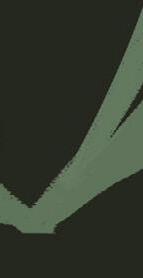


“





Greek life values the tradition of big/little. This program has more experienced members (bigs) take newer members (littles) under their wing, showing them the ropes of the sorority/fraternity. Though a duo may only be together for a few years, it can end up being a lifelong friendship despite the potential distance after graduation.


over Taylor Swift and Executive positions, the two learned to merge the lines between mentorship and friendship.
“It’s somebody to hang out with,” McCullom said. “It’s that person that’s going to mentor you and be that person that you can look up to but then also get along with. Our relationship formed into a relationship where we’re best friends now.”
For Bell, being a mentor meant also investing in self-care and growth so that she could be the best version of herself for McCullom.
“It didn’t really feel like I was a mentor looking back,” Bell said. “I guess that someone’s always looking up to you for something. I wanted to steer Sarah in the right direction… I want to be a good role model for her.”
Sarah McCullom ’25, a psychology major and her big, Maddie Bell, who graduated in May of ’23 with a degree in environmental science are a perfect example of this relationship. In the Alpha Chi Omega sorority, the pair became big/little out of pure instinct. Three days before the final submission for who she wanted her little to be, Bell had an instinct that she was meant to spend more time with McCullom. Shortly after, they attended a one-on-one new member introduction meeting to De La Vega, a Latin American restaurant, in Downtown DeLand.
“It instantly clicked,” McCullom stated with a smile on her face. “It was like our personalities, just meshed.” After bonding
Whether it was showing up for a sorority meeting even when she was having a bad day, or going to her classes on days when it was tempting to skip, Bell always showed up for McCullom and continues to show up for her even though she lives almost 950 miles away in Pittsburg, PA. She is now working for a civil engineering firm as a geology technician.
“We definitely don’t FaceTime once a day, even once a week, sometimes we probably go a month without FaceTiming,” McCullom said as she looked toward Bell. “There’s never any concern with that. We’ll pick up where we left off.”
The connection between mentor and friend isn’t unique to Greek life. This is also evident in the music program with music majors Carlissa Gudiño ’27 and Julianna Tuttle ’24. This pair plays the French horn in the Symphonic Band
the
15
reporter

and mellophone in the Pep and Hatter Bands.
From random McDonald’s trips to laughing over South Park, the pair have based their relationship on working hard and playing harder.
The duo loves to dance and occasionally poke fun at the rival team during Hatter Band. However, they always come back to the unity their music provides. The School of Music has different graduation requirements than other majors and programs. With this in mind, Tuttle never thought of herself as a leader– it was always just part of a tradition.







“We just take all the wisdom from the people, who I remember my freshman year, the seniors and just keeping those ongoing,” Tuttle said. “Just making sure everybody knows [what they’re doing].”
These efforts did not go unnoticed. Having a mentor is essential to staying on track- and Gudiño felt that support.
“She really took me underneath her wing,” Gudiño said. “She sits next to me and always helps me with the pep band.”
The School of Music also provides many opportunities for students to gain leadership experience. For example, Tuttle is the School of Music student advisor counselor to the Dean. Her responsibilities primarily focus on advising the first-yearclass of music students.
d“She’s such a natural-born leader,” Gudiño said enthusiastically.
Gudiño hopes to follow in Tuttle’s footsteps as she works towards the same position.
“[I told her] just be authentic and [her]self,” Tuttle said. “It’s really about putting others before you and making sure that the next group of people coming into The School of Music is going to have the same or even better experience that you did.”
The guidance provided by these mentors bringing in the next generation of Stetson students doesn’t stop there. These relationships highlight how family-orientated Stetson is in its values, and nowhere is that more displayed than with the admissions staff. Take Admissions Assistant Lexi Trapp ’23 and Director of Admissions Shannon Greeley ’14, MBA ’21.
To say Trapp was involved on campus would be a profound understatement. Trapp first became involved in the pre-law fraternity, Phi Alpha Delta. This became the introduction to every organization that she ended up being a part of. She was a part of Model Senate, FOCUS Orientation, Omicron Delta Kappa, Psi Chi, Environmental Club and most noticeably captain of Student Ambassadors.
Every week, Trapp maxed out her hours, working 20 hours a week. Her dedication and enthusiasm for future hatters and the success of Stetson did not go unnoticed.
“There had always been, since I started working in ambas- 16 the reporter

sadors, comments, jokes made,” Trapp said. “Like, ‘when you graduate, you gotta come back and work for us at some point.’”
Though a hopeful dream, this seemed unlikely as Trapp has ambitions to pursue law school. There would realistically be no time before she went to law school to dedicate herself to the admissions staff. Though, that was until Trapp graduated early.
“I have this really weird gap between right now where I’m not in school, versus all the way until August when I’m going to be in law school,” Trapp said happily. “I feel like student ambassadors set me up to be able to be in the position that I’m in now.”
Despite the prior comments and jokes about Trapp getting a job after graduation, there wasn’t a job available in admissions. So as her mentor, Shannon Greeley created a job for her.
“
“It’s really about putting others before you and making sure that the next group of people coming into The School of Music is going to have the same or even better experience that you did.”





“Her willingness to always help in the office is evident,” Greeley said. “I was like [to Trapp] you love this place a lot. I wanted to help her in her downtime while also helping the university.”
More than anyone, Greeley would understand the familial impacts that are cultivated at Stetson. She graduated from Stetson with her Bachelor of Science in biology and later was hired as an admission recruiter due to her student life involvement including tour captain. From there, she worked her way up the ranks of the admissions office to Director of Admissions.
Thanks to Greeley’s guidance, Trapp now continues to max out her hours, working 40 a week, on top of her preparations for law school which she will be attending in the Fall 2024 semester. Greeley understands the importance of being well-balanced and encourages Trapp to have fun in her time working for admissions.
“She is so big on not burning out in a job,” Trapp said. “And she’s told me that too, she’s like, this job does not need to be a burnout for you. This job needs to be a relaxation for you, that you get to come in, you get to see a bunch of people who you love to be around and love to be around you.”
Having been through this before, Greeley knows how to support her and the entire admissions team.
“I was really burned out when I was a recruiter,” Greeley said, “What’s grown as I’ve become a leader is being able to listen, while also having the team listen to themselves.”
In the event Trapp considers being employed in admissions in her far future, she would be open to the possibility of coming back to Stetson.



“I just want to come back and be a Shannon,” Trapp said laughing. “I wouldn’t take her position. At that point, she’ll be president of Stetson.”









Stetson University embodies a culture of mentorship that transcends boundaries across Greek life, the School of Music and the admissions office. Through programs like big/little and the guidance of mentors like Julianna Tuttle and Shannon Greeley, the university fosters a sense of collaboration and growth. These narratives echo the ideals of fostering talent and nurturing potential, showcasing that Stetson students, both past and present, are committed to cultivating excellence in all aspects of their community.



the reporter 17
the reporter 17
Dear Reader

Dear Reader Editor Edition
Question
 by Sara Ward
by Sara Ward
’27: What are the top three things youre constantly checking on to do the job?
Dear Future Executive Editor,

As the Executive Editor for the Reporter, I felt like I was always checking on something. It’s different for everyone, but for me, it wasn’t the type of position where you can clock in, do your work and clock right out – leaving all things work-related at the door. You’re working with a team of both writers and designers, and things left unchecked or unfinished can easily affect the timeline of finishing the magazine. With this in mind, I overthought a lot and constantly double-checked. But, the top three things that had me opening my text messages or the Reporter drive in class are easy to remember… Especially because I looked at these same three things earlier this morning before writing this letter.
Looking at the progress of each piece is a must – especially ensuring that it correlates with the upcoming deadline. Much love to the current Reporter staff who’ve stayed up-to-date with their deadlines and made my job so much easier! Though, even with that, it was always a thought on my mind when we’d reach a weekly deadline, because the lateness of even one writer doesn’t just prolong the editor’s job, but also the designer’s job on the other side of the team as well.
Meetings are definitely a close second on my Reporter mental checklist. Budget sections, design sketches, staff and editor check-ins, and final mag looks are meetings that you’ll schedule throughout the magazine process, and these are necessary to move on to the next step. So, double-checking and making sure that people can still



make it the day before was something that I usually did. Because, well, people have lives, people forget or it’s too early in the morning – so, yes, that was something on my mind until the meeting was done and complete.
























I’d call the last thing on my checklist the five-in-one package. This consisted of the dear reader segment, staff question, playlist, cover stories and taglines. Now, these are the few things in the magazine that aren’t stories and are more of little specials in every Reporter magazine. And, since they aren’t stories written by staff, it’s usually up to you and the managing editor to get these done. So, that means asking staff their thoughts and preferences on the dear reader segment, staff question and playlist, and then playing around with different ideas for the stories that’ll find a home on the front cover and catchy description lines for each story. It was a bit tricky remembering to do some of these because they aren’t typical stories that have deadlines. Now, all of this to say, that this was MY thought process and mental checklist. It could be totally different for you or maybe the same exact thing. I know it may seem like a lot, but with practice and repetition, it gets so much easier and honestly, so beautiful. Always remember that it’s not just you and to rely on your team members – you’re all in this together. I’m so excited to see the content that you will put out, and I wish you the bestest of luck!







Cheering for You!






 Alis Cadena ’26
Alis Cadena ’26





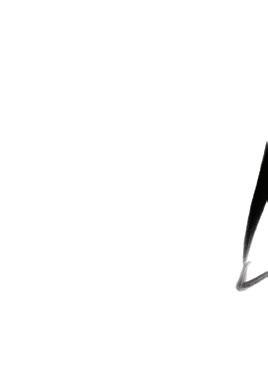





18 the reporter
this It –I
Reader Segment:
Reader Segment: Edition



Question by Reagan Shivers ’26: How do I become the mentor after being the mentee?



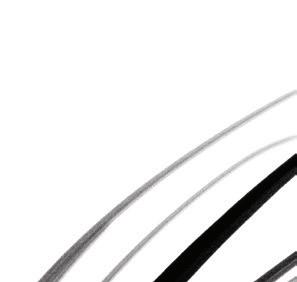










Dear Future Managing Editor,


you’re in the same shoes that I was a few years ago, and I wanted to tell you and ask you all the things I wish I had known earlier.








One of the most important parts of becoming a mentor is always having your own mentors to rely on. I can immediately call to mind five people I consider my mentors in different areas.






A (very) short list of all the things I told you and asked you: Here’s all the research grants in the history department! Has anyone told you about public history internships? Have you thought about grad school? Have you heard of Phi Alpha Theta? This local scholarship fits you perfectly, you should apply! Are you slowing down and enjoying college? You’re really good at writing, you should apply to this thing called the Reporter!

I have a mentor for my academic future (Dr. Mieras), a mentor for shopping (Lili Sheridan ’24), a mentor for my editing (Our very own Ciara Kelley ’24), a mentor for ‘big girl’ things (Isabelle Barnett ’22) and a mentor





I can always fall back on (My Mom). If you find yourself being leaned on without anyone to lean on yourself, you’ll fall.






Something important to remember is that you cannot force anyone to be a mentee, they have to want your help. There have been a ton of times that I’ve offered a helping hand and nobody reached out to grab it – and that’s okay. Sometimes, you might even be frustrated, thinking, “I know exactly what you should be doing!” Over time I’ve learned that if they don’t want to be your mentee, leave them be.

To specifically answer your question about transitioning into the mentor role, I would say don’t rush into it. I ran full force into college, joined a bunch of clubs and became president of one way too fast. That was a giant mess because I was being a mentor just for the sake of doing it, and I hadn’t really earned the knowledge to fill that position yet. When I met you, I didn’t make it my mission to be your mentor – I just recognized that






To your credit, you have reached out and accepted my helping hand, so for that you get an A+ in the mentee department. You’ll be a great mentor to lots of people in your life, whether they’re in the Reporter, in the history department or you just run into them somewhere else in the world.




My general tips summed up are: never be without a mentor of your own to rely on, you can only mentor people who want it and spend enough time investing in yourself so that you actually have wisdom to offer.


Always a Text Away, Carlye Mahler ’24 different















































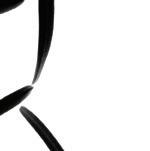


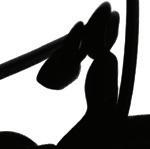



19
I ’22) them the reporter
Story by Alis Cadena and Carlye Mahler Layout and Graphics by Hayden Collins

Massive Increase of Distribution in the Reporter
Thanks to the consistently higher demand for physical copies of the Reporter, we have increased our order size by 50, bringing us to 350 copies ordered per issue. Issues of the Reporter are available through tabling on distribution day and at many magazine stands around campus. If you’re not able to snag one of the 350 copies, head over to HatterNetwork.com to read the digital version of the stories.
Moving Up In The World: Accessibility and Elizabeth’s Elevator
The historic Elizabeth Hall will be more accessible with the announcement that an elevator will be added in the Fall 2024 semester.
Buggin’ Out
The Caterpillars have done it again; the initially inconspicuous green caterpillars inevitably sprouted the fuzzy orange coating that all members of Hatter Nation have come to loathe. Consider this your formal warning, backpacks laid on the ground are sure to attract the critters. These fuzzy caterpillars are also known to fall from the trees as a surprise attack on unsuspecting students– shocking many as they hurriedly flick the caterpillars off their clothing.
Road Work Ahead?
Yeah, I Sure Hope It Does.
Stetson students are faced with a myriad of detour signs and their rerouted drives are speckled with orange cones– nothing like digging a big hole to take down the WiFi in Davis Hall.
Stetson University Men’s Basketball Historic Feat


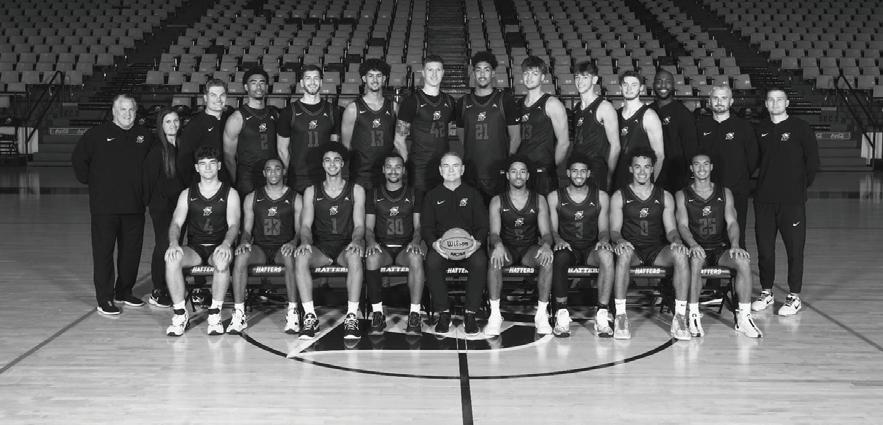


team as dozens gathered in the student lounge in Stetson’s Carlton Union Building to watch the lively event. The sound of student cheers were heard from all the way across the building as the Stetson’s men’s basketball team showcased their talents against a formidable opponent. The atmosphere was electric, with every basket and defensive play met with raucous applause. The team’s resilience and skill were on full display, earning them a newfound admiration and respect that will not be forgotten with this historic feat.
basketball team made history by advancing to the men’s NCAA tournament, also known as March Madness, for the first time in Stetson’s program history. Stetson was designated as the 16th seed and put up a valiant fight against the UConn Huskies. Stetson supporters lined the streets, and DeLand shopkeepers adorned their windows with encouraging messages and Stetson flags. Hatters were incredibly proud to be recognized on a national stage for the outstanding work of the Stetson men’s basketball across






stetson university deland , florida Spring 2024 Issue II EXTRA!! EXTRA!! SPECIAL EDITION!! EXTRA!! EXTRA!!
20 the reporter
and
Layout
Graphics by Michelle Marshall






Ampers&nd Ampers&nd









A true Renaissance woman, Jodi-Ann Taylor ’24 is not only an artist, but also a musician, photographer and full-time Digital Arts major with a double minor in music and entrepreneurship. With the upcoming Stetson Showcase Creative Arts Exhibition, I sat down with Jodi-Ann to hear all about her multimedia project, “All Creation Sings.”


the reporter 21
Renaissance Woman Renaissance Woman
the reporter 21 Story by Ciara Kelley Layout by Hayden Collins Graphics by Cristal Sherman
Could you tell me a bit about your project?
So, it’s my senior project. I kind of had the opportunity to start it through the SURE grant and do research over the summer where I started out doing field recording in nature with bio sonification, which is basically capturing the electrical current changes in plants. It’s a multimedia project exploring the connection with technology, nature, art, and music, to tell a story. The tracks on the album have some field recordings and nature sounds embedded within them. Then I have my art installation to complement everything I’m doing. I’m using natural earth paint to keep the theme of using nature to tell my story. Through the art and music I’m making, it’s going to be telling my story.
Would you elaborate on bio sonification?

Yeah, it is the electrical current of the water moving within the leaves. Then, it is recorded into data, and when you go into a DAW or digital audio workstation, you can take whatever notes that are calculated or transformed into MIDI (Musical Instrument Digital Interface) data, then assign different instruments and different sounds to it.
So, what led you to working with nature?
There was actually this conference in my electronic music and sound design class in my junior year. We had a visiting artist with the World Forum of Acoustic Ecology, which is a collection of artists from around the world that use field recording of things like whale sounds to tell stories. The specific artist led us on a sound walk around campus which was really cool and a really beautiful experience. It was a lot of listening, a lot of exploring and experiences that led to me deciding, ‘okay, maybe I could do something with this.’
How do you navigate the intersection between nature and the natural with the artificial and the digital?
With all your artificial and natural elements, do you feel like your art is a blending of the old and the new in any way?
It’s really interesting, because I feel like in the album, I talk about transformation because of nature. Because, things be transforming. I feel like personally, I’ve grown and transformed, and I’m still being transformed. Even the songs that I wrote, some of them are from a time when I was going through a lot and trying to understand the world. Then with painting, that’s one of those things that I started with, but it’s grown so much that like now I’m oil painting, which is crazy. If you told me in high school when I was just using pencil, wow. So, it’s definitely a representation of the old things in my life that have grown into the new.

The thing with capturing is you want to be mindful of where you’re recording and mindful of the environment. I learned a lot about three different things: biophony, geophony and anthrophony. Biophony is the sounds of the animals and the creatures. Geophony is the sound of like, the wind, the rain. Then, anthrophony is the sounds that we make and produce as humans. So, it is about being mindful of, you know, the sounds that you’re making and what you’re contributing to the environment that you’re recording in. It is also about just figuring out which equipment works the best, because the different microphones you use makes a big difference in what you capture. Even the recording interface, which is what you plug the microphones into, also impacts the sound, which is kind of interesting. It’s a lot of experimenting. You have to be really intentional about what you’re recording with, because when you go to edit and mix, you can’t really undo.

Would you walk me through the process for each section of your project?
For painting, there was a lot of introducing myself to the natural earth paints and learning how to mix the pigments. So, I mix my paints then I use Procreate to grid my reference photo and do an underpainting. I actually got to experiment with leaf prints and leaves I collected around campus, which was really cool. For songwriting, it’s kind of collaborative; I’ll have a melodic idea that I’ll record into my voice memos. Sometimes I’ll sit playing the piano to develop a little more and figure out lyrics, because it’s kind of like poetry for me. Then I’ll collaborate with another musician to play along with me, maybe on an instrument that I’m not as skilled at, and they’ll help me continue to shape the song. Specifically for my album, we recorded vocals, piano, guitar, bass guitar and electric guitar.


With photography, sound design and painting, how do you organize your project?
The one that feels most comfortable is painting for me; it is more of a free thing. I am very self critical with my music, so sometimes that can be harder for me. Mixing the music is also very hard. It’s like my first time learning how to do that and balance the different instruments with vocal production. Then photography is just fun for me, mostly documenting my journey. I mostly split my time between the sound studio and the painting studio.



22 the reporter























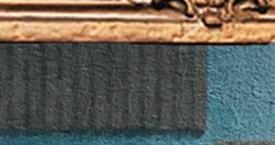


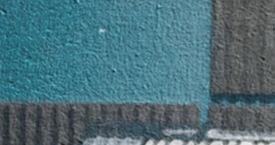

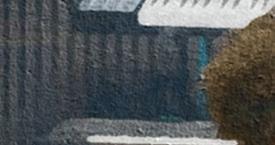




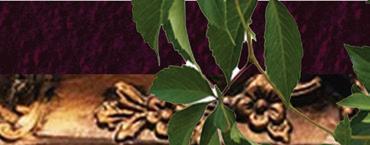










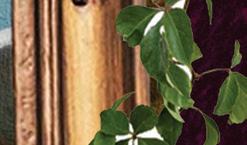




















the reporter 23






Moving Up World






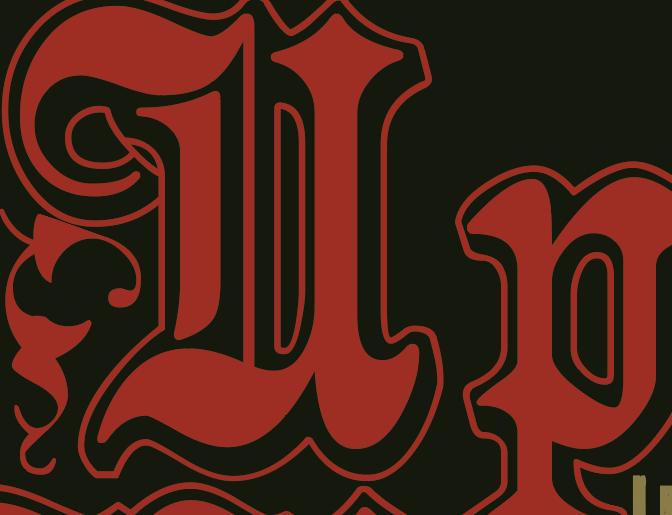




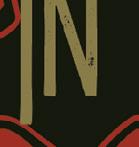







the :Accessibility and Elizabeth's Elevator
Elizabeth Hall, originally built in 1892 and continuously updated since, is moving up in the world—or at least the students inside will be. It’s officially been announced that an elevator will be installed in Elizabeth, bringing students into the future as well as up to the third floor. The historic past and the accessible future of the building are melding at this moment, but so are student and faculty opinions.
the reporter
24
24 the reporter Story by Carlye Mahler Layout and Graphics by Maria Latour Photos by Reagan Shivers and Carlye Mahler
In
“




The historic past and the accessible future of the building are melding at this moment, but so are student and faculty opinions.
Though, the project entails more than just the elevator: the building plans to add more bathrooms to adhere to modern standards as well. This means that there will be some major changes coming to Elizabeth. Caitlyn Alvarado, History Department Administrator and Building Manager for Elizabeth Hall, comments, “We’ve lost three classroom spaces, one whole department space and obviously our current bathrooms are going to be removed.” In spite of that, they follow up with how it may have been a worthy trade-off for the History department to make, noting that giving up three classroom spaces was necessary to save the cherished Lycan Room study space. Alvarado followed up, saying that the department space lost on the second floor was “Environmental Sciences, which was fortuitous since we now have Brown Hall.”
Even as the details of the elevator become settled, the installation of the elevator finally happening does bring us to pause to consider why an elevator is so necessary in the first place. “Both of my majors are native to Elizabeth Hall, and there have been multiple times in which I’ve had to kind of lug myself up the stairs,” says Ali Burgess ’25. Burgess describes that their hypermobile Ehlers-Danlos syndrome has made it difficult to trek the lumpier-than-average stairs of Elizabeth Hall.

mobility issues are pretty much relegated to the first floor. So it’s nice to see that going in.” Until the elevator is installed in Elizabeth Hall, the only option that disabled students and faculty have had is to request a classroom change to a more accessible building. Burgess describes this process as “isolating,” explaining that they are “a cane user, so if a class gets moved, people tend to know that I was the reason it was moved.”
Nevertheless, those with accessibility needs are not the only ones who will benefit from the elevator in Elizabeth Hall. Debbie Tate is currently the Administrative Assistant for the Philosophy Department on the first floor of Elizabeth, as well as the Administrative Assistant for the Communication and Media Studies Department on the third floor. Tate told me that she expects to still primarily use the stairs even after the elevator is added, noting that the trek up and down the stairs has been beneficial in some ways. “It’s probably kept me in better shape,” she jokes. But she also noted the benefits of the elevator being an option if she had something heavy to carry. Not only will the elevator aid in breaking down accessibility barriers and help meet situational needs, but it will also be there when able-bodied students and faculty face temporary injuries that make their daily hike up the Elizabeth stairs extra daunting. Associate Professor of Ancient and Medieval History, Dr.

Ann-Marie Willacker, Stetson’s Coordinator of Community Impact, points out that currently “anyone in a wheelchair or anyone with severe, you know,


”
the reporter 25
Kimberly Reiter, has personal experience with the matter when thinking back on the fact that she has “broken three bones” since working at Stetson and has made the trip up the bumpy Elizabeth stairs to her third-floor office, most of the time in heels. Regardless of the reason that someone chooses to use the elevator, Willacker cautions against judging anyone’s usage based on our assumptions. “There’s a lot of different reasons why someone may use an elevator, a lot of invisible disabilities or, you know, just situational occasions that may make someone need an elevator.”
“
If the Elizabeth elevator is being celebrated by students and faculty, welcomed by disabled and able-bodied members of the Stetson community alike, then why did it take this long? “Thoughts about having an elevator have definitely been a thing for several years,” says Alvarado. Like many people interviewed, Alvarado brought up fundraising as an element that delayed action on the elevator, adding that “people’s wishes and where the money was coming from” played a role in the prioritization of other construction projects. Dr. Reiter adds, “One of the things that’s really been holding it back is that Elizabeth Hall is designated as a national monument on the Historic Register, which means that any elevator put in has to be put in very carefully and respectfully of the architecture already in place.”
an elevator, it just feels like this was a little bit of an afterthought.” Dr. Melinda Hall, Associate Professor of Philosophy and Associate Dean for the College of Arts and Sciences, like many others interviewed, expressed excitement that the project was finally happening, but also affirmed Burgess’s sentiments. “At the same time, yeah, we need to budget. We need budget priorities that allow us to tackle these projects earlier,” Hall commented. Provost Elizabeth Skomp concurred, adding, “Unfortunately, making spaces accessible is a costly endeavor.” However, she affirmed that Stetson would need to prioritize accessibility needs by adding, “It’s a cost that we absolutely must be willing to absorb.”
”
“There’s a lot of different reasons why someone may use an elevator, a lot of invisible disabilities or, you know, just situational occasions that may make someone need an elevator.”
The elevator in Elizabeth Hall is certainly a win for accessibility, but it is far from solving all barriers to accessibility at Stetson. Dr. Hall, whose main area of philosophy is disability, laid out her thoughts on the subject of accessibility. She notes, “Accessibility in a college campus is really, really complicated. We need a lot of analytical tools to notice who has to be responsible for what and how change happens and to really push to make things good.” Burgess explains how they tend to approach issues of accessibility with a cautiousness, commenting, “I tend to pick classes with professors that I know that are going to be accommodating and not annoyed.” Dr. Hall specifically brought this issue up, noting that she adds her own personal note to the copy-paste accessibility statement added to class syllabi that read along the lines of: “I am happy to talk to students about these matters, because I don’t want them to worry that I will be frustrated with them.” Dr. Hall also
Burgess explains their mixed feelings on the progress being made, “It’s good that we’re getting
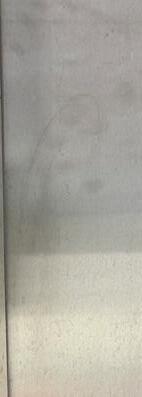




“Elevators certainly aren’t foolproof” Photo taken by Carlye Mahler on March 26th in Davis Hall



26
the reporter
“ ”
“Unfortunately, making spaces accessible is a costly endeavor.” However, she affirmed that Stetson would need to prioritize accessibility needs by adding, “It’s a cost that we absolutely must be willing to absorb.”
noted that the structure of the reporting system puts pressure on disabled individuals to identify and report accessibility barriers.
Elizabeth is on its way up and into the future, but if Stetson wants to keep up with accessibility needs, students like Burgess emphasize that they’ll need to pay attention to details. The current ramp into Elizabeth Hall has several problems that Ali detailed, from the incline of the ramp, to the small platform and quick swinging doors, even down to the rust built up on the guardrails. Willacker mentions that redoing the ramp into Elizabeth is part of the current plans to bring the building into the future, commenting, “A whole new ramp is being built with a switchback feature, which will kind of make the angle of the


Ali
Burgess, Philosophy and Political Science, ‘25
ramp far more accessible.” Willacker also advised against seeing the Elizabeth elevator as the end of the road toward accessibility. “I would caution campus to not look at some of the bigger things as the fix-all. There’s all sorts of little things that really affect daily life for people, particularly with people with mobility issues on campus that are small and tiny.” Burgess knows that the seemingly little things can make a big difference, down to the “little clips in the sidewalk” which can make Stetson extra treacherous to those with mobility needs.
Burgess summed up the ongoing work that is Stetson’s journey towards an accessible future, stating, “I work with accessibility, so I’ve been really excited to see these developments and I hope that we get more elevators in other halls like Sampson and Allen. There are plenty of accessible issues that we need to resolve, and I think that celebrating the elevator is fantastic, but we shouldn’t just stop there.”
the reporter 27


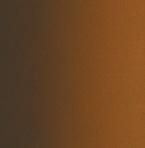

Photostory Photostory with Reagan Shivers
28
the reporter
Story and Photos by Reagan Shivers Layout by Hayden Collins
Photographing a Renaissance-era style photo shoot seemed daunting at first. With such a tight turnaround, the elaborate settings and outfits I was thinking of didn’t seem tangible. After some brainstorming with my fellow Reporter staff, we found a way to incorporate Stetson’s familiar settings with the dreamy Renaissance aesthetic. The solution? Elizabeth Hall.
As a history major, I spend a lot of my time in Elizabeth Hall. I’ve met my best friends in classes there, and I sometimes wonder about the people who walked the halls during the building’s early days and muse about their daily dramas. The Renaissance and Stetson aesthetics quickly melded into a story of beginnings and ends, but most importantly, companionship. So, this is my love letter to the friendships, old and new, found in Elizabeth Hall.
The photoshoot itself surprisingly went without a hitch. Managing Editor Carlye Mahler ’24 and Arts and Culture Editor Ciara Kelley ’24 were essential in finding the right props to set up our elaborate dinner scene. As the models trickled into the building’s main entrance on a Tuesday evening, so did other students –and everyone had fun watching the different reactions to our bizarre props and costumes.
I was a little vague to the models about what I expected them to wear on purpose because I wanted a mixed bag of aesthetics to contrast with one another. Luckily, everyone understood their assignment, and I was pleased to photograph Ciara wearing 1960s-style clothing next to other models, like Noureen Saaed ’24, in flowing white dresses.
In terms of lighting, we were confined to Elizabeth Hall’s dated fluorescent top lights and my personal desk lamp, which came in clutch to give the models a dreamy front-lit glow against the eerie main staircase and hallways.
The cover photo itself involved a lot of shuffling and a few “can you guys move in closer?” requests, but the somewhat exhaustive posing had a breathtaking outcome. Between the models’ makeup and the various props, the photo has a vibrance to accompany its dark, moody Renaissance origins. I was inspired by the photography genre “modern Renaissance,” which mimics the subtle chaos of actual Renaissance-era paintings. I instructed the models to look at different places and do different things, altogether forming a cohesive photo with interesting detail.
For some other scenes, we tried out different locations on the first floor, notably the women’s restroom. It was a little cramped with nine people crowding around the mirrors, but it resulted in some fun shots that communicate the camaraderie of the shoot. In a short side-track to the actual stalls, we experimented with the kookiness of Ciara Kelley’s Twiggy-inspired outfit to produce one of my favorite photos of the night.
Throughout the shoot, I enjoyed watching everyone bond over their shared interests in aesthetics and, for many of the models, their graduation this spring. Watching the models experiment with poses and work with one another was refreshing and definitely contributed to the easiness of the shoot. It was a joy to capture these moments, and I hope readers can see the love and effort that went into these photos and the magazine itself.

the reporter 29








30 the reporter










the reporter 31
Playlist currated by Alis Cadena and Carlye Mahler Photo by Reagan Shivers































 Mahler, Managing Editor 20232024
Mahler, Managing Editor 20232024










































































 Burgess Executive Editor of Touchstone
Burgess Executive Editor of Touchstone


































































































































































































































































































 by Sara Ward
by Sara Ward















































































































































































































































































